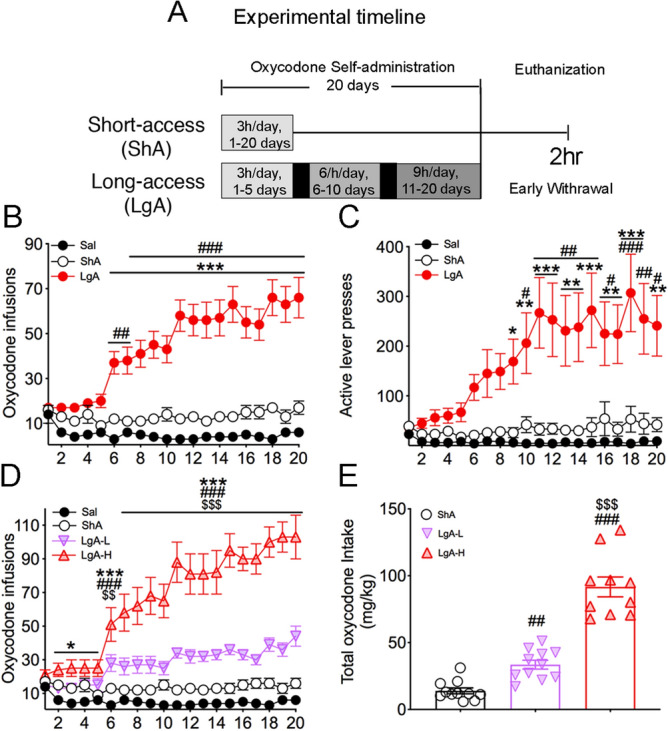Figure 1.

Rats exposed to long-access, but not short-access, oxycodone SA escalate their drug intake. (A) Experimental timeline of oxycodone self-administration (SA) training. Rats self-administered oxycodone using either short-access (ShA) (n = 10) (trained for 3 h for 20 days) or long-access (LgA) (n = 21–23) (trained for 3 h for 1–5 days, 6 h for 6–10 days, then 9 h for 11–20 days) paradigms. (B) LgA rats escalate their intake of oxycodone after the first 5 days of SA training. (C) LgA rats show significant increases in active lever presses during SA training. (D) LgA-H rats show two distinct intake phenotypes, high (LgA-H) (n = 10) and low (LgA-L) (n = 13) oxycodone takers, during the escalation phase. (E) LgA-H rats took substantially more oxycodone than LgA-L and ShA rats. Key to statistics: *, **, *** = p < 0.05, 0.01, 0.001, respectively, in comparison to Sal rats; #, ##, ### = p < 0.05, 0.01, 0.001, respectively, in comparison to SHA rats; $$, $$$ = p < 0.01, 0.001 in comparison to LgA-L rats. Stats were performed by either one-way or two-way ANOVA followed by Bonferroni or Fisher’s PLSD post hoc test.
